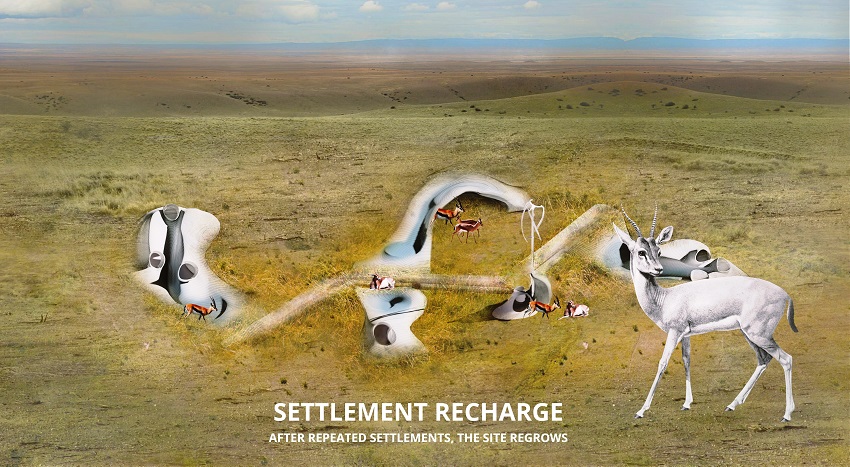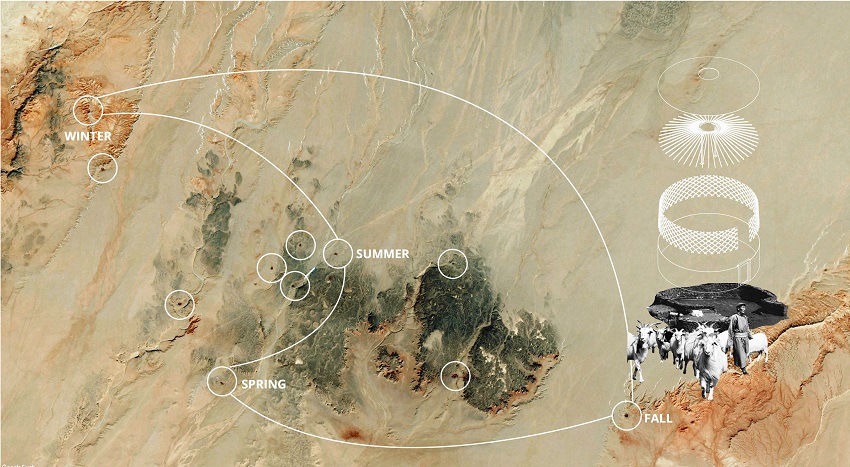Mongolia is world’s sparsely populated largest landlocked sovereign nation in the East Asia. Much of Mongolia’s area is covered by green steppes with Gobi Desert towards the South and beautiful mountains to the North and the West. Nearly 30% of Mongols lead a nomadic life. As I travel in my quest in search of young architects, who are creatively innovative, I happened to meet Javkhlan (Java) Nyamjav. She is a Mongolian and recently graduated with a Masters in Architecture degree from the University of Minnesota.
At the Minnesota Design Center, Javkhlan Nyamjav has worked as a researcher concentrating on future streets with autonomous vehicles and post pandemic designs. She is passionate about bringing design, research, and innovation together to find creative solutions for environmental issues and social inequities. She enthuses, “My design approach focuses on systems thinking and looking at things as a part of a bigger whole.” Currently, Javkhlan is finishing her MS in Architecture Research Practices. She is also doing her internship at MSR Design, researching building embodied carbon.

Javkhlan Nyamjav is young, talented, creative and innovative in her approach towards architecture. What attracted me the most about Javkhlan is her love towards her country and her people! Javkhlan has designed, along with her classmate Drew Tangren, an amazing innovative project during her Masters titled OTOR. Johnny D talks to Javkhlan Nyamjav at great length about her interesting journey to become an architect and her project.

Enlighten our esteemed readers about your innovative project OTOR.
In collaboration with my classmate Drew Tangren, the project ‘OTOR’ was for our M. Arch thesis. ‘OTOR’ in Mongolian means encampment, pasturing of animals for better grazing! One of the prevailing issues in Mongolia is with harsh winters, we experience each year. Nomads are losing a lot of their livestock and forcing them to move to the cities creating informal settlements. It is rapidly urbanizing, but the quality of life is not improving for the majority of people.

Our project aims to provide more resources to nomads by seeding outposts in deserted areas of Mongolia. The outposts are made with local materials, while protecting them from harsh winters and at the same time provide more food accessibility. The project is an experience that will enrich the lives of the nomads.
We aimed to empower the nomads by allowing them to create their own cashmere products that can enter the global market. We took a lot of inspiration from Keller Easterling’s ‘Extrastatecraft’, and CJ Lim’s ‘Inhabitable Infrastructure’.
Since Mongolia has limited public infrastructure in the rural areas, we explored the role of technology and how it can leapfrog a lot of existing development stages. The result shows an alternative option for more accessibility, security and equity for Mongolian nomads.

Your childhood ambition, did you always wanted to become an architect?
I grew up with engineers in my family. I remember, when I was a little kid, they would take me to construction sites. I was so fascinated by just watching all the parts that go into buildings – the hidden gems inside the walls (smiles). At home, we used to have a lot of scrap papers with construction drawings. I used to draw plans and furniture arrangements as a small kid. So, I grew up pretty close to the construction industry.
However, I always had an artistic passion that revolved around music, drawings and paintings. I wanted to create something that touches people’s lives in some ways. So architecture slowly grew on me and I really enjoy practicing it!

What does ‘architecture’ means to you?
Architecture is part of everyone’s life. Even though, somehow it becomes a background piece. It is very essential in our lives. Architecture can take on so many roles. It is shelter and protection, comfort and creativity, and also a portrayal of power and wealth. It has the good and the bad sides as well and also all the colors in between. I strongly believe that architecture needs to serve the people, people in need at large, rather than following the money.

How has it influenced your life as an architecture student?
It made me to look into things from the bigger picture. I believe everything is part of a bigger whole and every part plays its own role. There is nothing very isolated from everything. So, it made me research more into the communities, the people we are designing for, the society, economy and even politics. I love to question ‘why’ and ‘why not’? Why is our system set out to be like this? What can we do? Architecture has changed my thinking process in a more creative manner.

Which International architect has inspired you? Please specify as to why?
My biggest inspirations are utopian designers like the avant-garde architectural groups Archigram, Superstudio, Ant Farm and American architect Buckminster Fuller. Among the recent ones would be Lateral Office. I love the way they all have opened up the architectural field to ‘the’ whole new realm of design. It questions the norms and brings innovative ideas. Even though, there are limits to what architects can do, we can still imagine things and influence others. We could potentially affect the policy and make visions into reality. So nothing is really impossible!

How has the pandemic changed your learning process?
I have missed being around the studio environment, just being inside all the creativity and chaos. However, ‘working from home’ allowed me to do everything at my own pace. I became a lot more productive, because I had more time for myself, constantly recharging myself with new ideas, and learning new things. I noticed that I am still holding onto hand drawings and model making. Simultaneously, I was definitely learning new representation tools and improved digital modeling.

How will the younger generation of architects overcome the herculean challenge of Climatic catastrophes / Climate Crisis?
Resilient and regenerative design is one of my passions. As an aspiring architect, I truly hold responsibility for the future. I believe we should do more and talk less here. Sometimes, I get worried that ‘green washing’ is taking over the good intentions, but the industry as a whole is changing, so that’s a good thing! We need to keep educating ourselves and all the stakeholders in the projects to reduce environmental damage.

Image Courtesy: Javkhlan Nyamjav and Drew Tangren